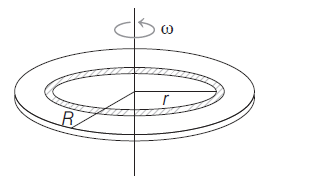Q.
A non-conducting thin disc of radius $R$ rotates about its axis with an angular velocity $\omega$. The surface charge density on the disc varies with the distance $r$ from the centre as $\sigma(r)=\sigma_{0}\left[1+\left(\frac{r}{R}\right)^{\beta}\right]$, where $\sigma_{0}$ and $\beta$ are
constants. If the magnetic induction at the center is $B=\left(\frac{9}{10}\right) \,\mu_{0} \,\sigma_{0} \,\omega R$, the value of $\beta$ is
TS EAMCET 2018
Solution:
